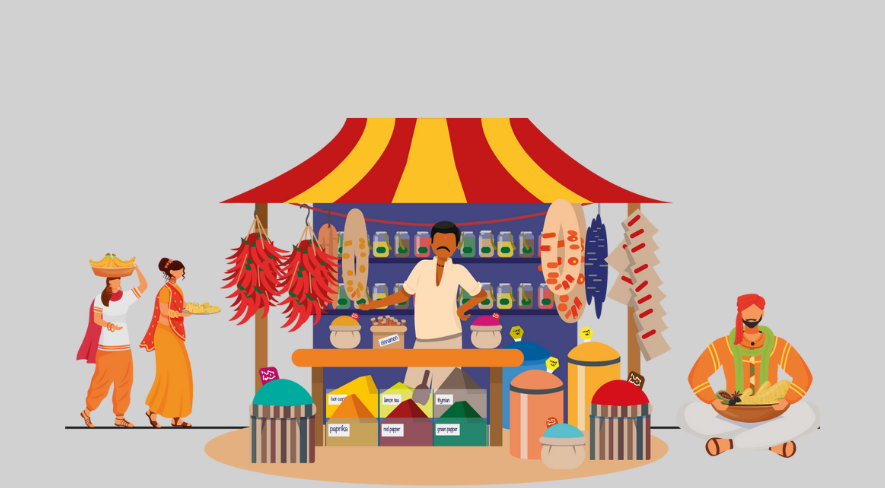India has been an attraction for people across the globe for the diverse experiences it offers. Be it the traditional knowledge, colours seen on our busy market streets, the aroma of our culinary delights, the cheerfulness of our festivals, or the breathtaking landscapes that change from place to place.
The ethereal experience that is India does not limit itself to the exteriors but it is very much imbibed in the mundane, day-to-day tasks as well. Indian kitchens, or more specifically, the spices used in the kitchens, are as much a part of India’s culture as the next best thing about India. Usually known for their potential to amplify the taste, lately, spices have been in the news for a very different albeit much-known reason. As the pandemic shifted attention towards health and homemade solutions, the medicinal properties of a lot of Indian spices gathered the spotlight around the world with turmeric leading from the front. Turmeric is an essential ingredient in every Indian household irrespective of the curry that one is preparing. It is not just the taste and the colour that it provides, but it has always been known as an auspicious and healing herb. The world has been rooting for turmeric but during the pandemic, the demand grew stronger globally. According to an Economic Times report in India, turmeric sales to Europe and West Asia shot up by as much as 300 percent with increased demand in the UK and Germany last year.
However, turmeric is just one of the many spices or ingredients that India is known for. Indian meals with curries, spices, and distinct flavours have always been like art. They not only amaze the world with their taste but also offer benefits with their health properties. The culinary legacy of India is also a significant symbol of the Indian way of life and that in itself has been a soft power influencing the world.
In the modern-day scenario, the culinary practises are again appealing to more and more people from across the world. People wish to explore the holistic knowledge of these spices and Indian dishes, which is expanding the possibilities of food tourism. An important Indian initiative is the effort to revive the two millennia-old Spice Route. Traversed by sailors and traders of bygone times, it is one of history’s most significant and enigmatic trade routes. It had also resulted in a confluence of major religions, culture, and civilization in many parts of India, acting as soft power, even in those days.
Besides, immersive travel is shaping domestically, too. During the pandemic, a range of travel options with blended food and cultural experiences opened up. From the expansive green landscapes, snow-covered mountains, well-kept secret beaches, deserts, and sand dunes, to scenic lakes, quiet backwaters, and bustling streets, we started paying more attention to our hidden gems.
The indigenous arts, crafts, festivals, and recreational activities that exist abundantly, added to the unparalleled experience. Some examples include local travellers enjoying tea and coffee trails, learning folk dances, making musical instruments, cooking and eating with families in Homestays, witnessing the coming together of spices, trying their hand at pottery, uncovering Madhubani paintings, and other art forms. There is a lot that is already being explored in the and a lot more remains to be experienced in traditional indian knowledge systems.

